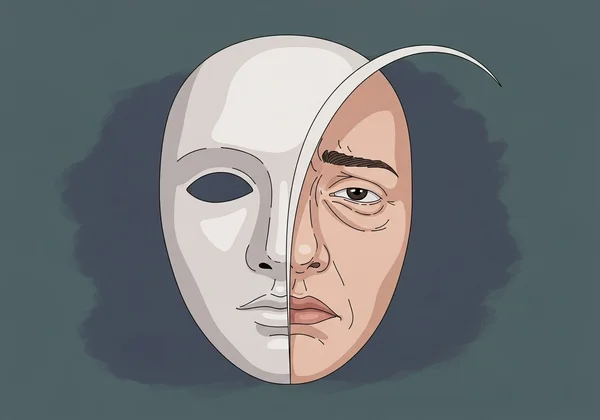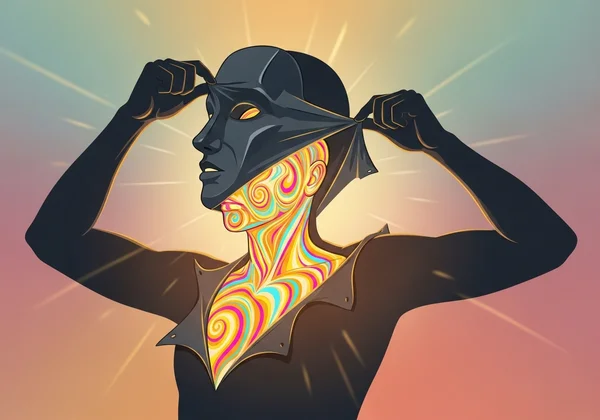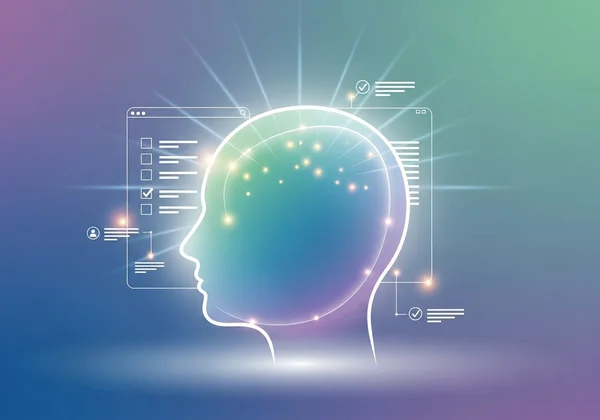Unmasking Autistic Masking in Adults: Insights from the RAADSR Test
July 21, 2025 | By Elara Vance
Have you ever felt utterly exhausted by social interactions, as if you're constantly performing on a stage where everyone else knows the script but you? This profound exhaustion is a daily reality for many autistic adults who engage in autistic masking, a demanding process of camouflaging their authentic selves to navigate a neurotypical world. Do you ever wonder if masking is taking a hidden toll on your life? This article will explore the depths of autistic masking, its profound impact on mental health, and how the journey of unmasking can lead to a more authentic and fulfilling life. If these experiences resonate deeply with you, know that you're not alone, and that embracing a path of self-understanding can be profoundly empowering. Accessible tools for self-reflection can gently illuminate your way forward.

Understanding Autistic Masking: A Key to Adult Autism Awareness
Autistic masking, sometimes called social camouflaging, is a set of strategies used, consciously or unconsciously, by autistic individuals to hide or minimize their autistic traits. It's more than just being polite or trying to fit in; it's a constant, effortful performance. The goal is to appear non-autistic to avoid judgment, bullying, or social exclusion. This process involves actively monitoring your own behavior and the reactions of others to adjust your presentation in real-time.
The Core Mechanisms Behind Masking Behaviors
Masking isn't a single action, but rather a complex collection of behaviors. This demanding effort consumes immense cognitive resources, leading to exhaustion. These mechanisms often include:
- Mimicking Neurotypical Behavior: This involves copying the body language, facial expressions, and conversational patterns of others. An autistic person might practice smiles in a mirror or memorize scripts for small talk.
- Suppressing Autistic Traits: This means actively holding back natural behaviors. This can include suppressing "stimming" (self-regulatory repetitive movements like hand-flapping or rocking), avoiding talking about special interests, or tolerating uncomfortable sensory input without complaint.
- Forcing Neurotypical Norms: This includes behaviors like forcing eye contact, which can feel intensely uncomfortable or even painful for many autistic people, or feigning interest in conversations that feel trivial or confusing.
Why Autistic Adults Often Mask in Daily Life
The reasons behind masking are rooted in a lifetime of navigating a world not designed for neurodivergent minds. Many autistic people learn from a young age that their natural behaviors are seen as "weird" or "wrong." Masking becomes a survival strategy developed to gain social acceptance, secure employment, maintain relationships, or simply for personal safety. It is a shield built to protect oneself from misunderstanding and prejudice, but this shield comes at a heavy cost. If you feel this describes your own experiences, a structured self-assessment can be a valuable starting point for deeper reflection.
The Hidden Toll: Unpacking Autistic Burnout & Fatigue
Continuously wearing a mask is draining. The immense energy required to suppress your authentic self and perform a neurotypical identity inevitably leads to a state known as autism burnout. This isn't just feeling tired; it's a state of profound physical, mental, and emotional exhaustion that can be debilitating. It’s the consequence of the chronic stress that comes from the constant pressure of masking.

Recognizing the Signs and Symptoms of Autistic Burnout
Autistic burnout can be mistaken for depression or anxiety, but it has distinct features stemming from the autistic experience. Recognizing the signs is the first step toward recovery. Key symptoms include:
- Intense exhaustion that isn't relieved by rest.
- Increased sensory sensitivity and a lower tolerance for stimuli.
- Loss of skills, such as a reduced ability to socialize, manage daily tasks, or communicate effectively.
- A feeling of cognitive decline or "brain fog."
- Increased autistic traits, as the energy to mask them has been depleted.
Long-Term Impacts on Mental Health and Well-being
Prolonged masking and the resulting burnout can have severe consequences for an individual's mental health. The constant self-monitoring can fuel anxiety disorders, while the feeling of not being true to oneself can lead to depression and a profound loss of identity. Many autistic adults report not knowing who they are "behind the mask," having spent decades prioritizing the comfort of others over their own authenticity. This deep disconnection from the self is one of the most painful aspects of long-term masking.
Identifying Adult Autism Traits: Beyond the Mask
For many adults, particularly those who were not diagnosed in childhood, masking can be so ingrained that they may not even recognize their own adult autism traits. The mask becomes a second skin, hiding the underlying neurotype not only from others but also from themselves. Understanding masking is often the key that unlocks a person's self-awareness, allowing them to see their lifelong challenges and strengths through a new, more compassionate lens.

Common Traits Masked by Autistic Adults
Beneath the surface of a carefully constructed persona lie the true characteristics of the autistic experience. Some of ahe most commonly masked traits include:
- Sensory Sensitivities: An individual might force themselves to endure loud parties or wear uncomfortable clothing, while internally experiencing significant distress.
- Special Interests: They may avoid talking about their deep, passionate interests for fear of being seen as obsessive or strange.
- Social and Communication Differences: They might use learned scripts for conversation, hiding an underlying preference for direct, literal communication and difficulty with unspoken social rules.
- Need for Routine: They may hide their preference for predictability and routine to appear more flexible and spontaneous.
Masking & Late Adult Autism Diagnoses: How a Free Autism Screening Can Help
Masking is a primary reason why so many autistic individuals, especially women and gender-diverse people, go through life without a diagnosis. They become so adept at camouflaging their traits that they fly under the radar of parents, teachers, and even clinicians. This often leads to a series of misdiagnoses, such as anxiety, depression, or personality disorders, without addressing the root cause. For many, the "aha!" moment comes in adulthood when they learn about masking and finally find an explanation that fits their entire life experience. Taking a free autism screening can be an important step in this discovery process.
Towards Authenticity: Embracing Neurodiversity & Unmasking Strategies
The journey of "unmasking" is not about abandoning all social strategies but about finding a balance that honors your authentic self. It’s a process of learning to live without the constant strain of performance. Embracing neurodiversity—the idea that variations in brain function are a natural and valuable part of human diversity—is the foundation of this journey.
Practical Steps to Gradually Reduce Masking
Unmasking can feel vulnerable and even frightening, so it should be done at your own pace and in a way that feels safe. It’s not about suddenly dropping the mask in all situations but about selectively and intentionally lowering it. Start with small, manageable steps:
- Identify your masks: What specific behaviors are you using to hide your autistic traits?
- Find safe spaces: Practice unmasking with a trusted friend, partner, or in an online community of other autistic people.
- Allow yourself to stim: Let yourself engage in self-soothing behaviors like fidgeting or rocking when you're alone or in a safe environment.
- Set boundaries: Learn to say "no" to social events or situations that you know will drain your energy or cause sensory overload.
Building a Supportive Environment for Your Authentic Self
You don't have to unmask alone. Building a supportive environment is crucial. This might involve educating loved ones about your needs, connecting with other neurodivergent individuals who understand your experience, or seeking therapy from a professional who is knowledgeable about autism in adults. Creating a life where you feel safe and accepted for who you are is the ultimate goal. For those just beginning this process, exploring your traits with our online assessment can provide a framework for these conversations.
Reclaiming Your Identity: The Journey of Self-Acceptance
Ultimately, unmasking is a profound act of self-acceptance. It is about giving yourself permission to be you. This journey involves grieving the years spent hiding but also celebrating the unique perspective and strengths that come with being autistic. Reclaiming your identity means honoring your sensory needs, embracing your passions, and communicating your needs without shame. It is a path to a more sustainable, authentic, and joyful life.
Unmasking Your True Self: A Path to Greater Well-being
For countless adults who've long felt 'different,' discovering autistic masking can be a profound, life-changing revelation. It offers not just a name for that persistent exhaustion or social friction, but also a compassionate framework for understanding your unique self. While the mask may have offered a necessary shield, shedding its weight is a powerful step toward reclaiming your mental well-being and embracing your genuine identity.
If this article resonates with you, know that you are not alone. Your journey of self-discovery is valid and important. To gain deeper insight into your own traits in a structured way, consider exploring a self-reflection tool. This can be a valuable, pressure-free step on your path to understanding and embracing your authentic self.
Frequently Asked Questions: RAADSR Test, Masking & Autism Screening
Is the RAADSR test accurate for identifying autistic traits?
The RAADSR test is a well-regarded screening tool designed to help identify autistic traits in adults that may have been previously overlooked or "masked." While it is not a diagnostic tool, it can be a highly accurate and valuable resource for self-reflection. It can help you see patterns in your life experiences and provide a framework for discussing them with a professional.
Can I self-diagnose autism based on masking experiences?
While understanding your masking experiences is a critical part of self-discovery, formal diagnosis should be done by a qualified healthcare professional. However, self-identification within the autistic community is widely accepted and valid. Tools like the RAADSR-inspired test on our site are designed to be a starting point for this exploration, providing information to help you understand yourself better, not to replace a clinical diagnosis. You can start your self-reflection on our platform.
How can the RAADSR test help me understand my masking?
The questions in the RAADSR test cover a wide range of traits related to social interaction, sensory experiences, and special interests. By answering questions about your experiences "now" versus "before age 16," the test can help you identify discrepancies that may be due to a lifetime of masking. Seeing a high score in certain areas can validate feelings you've had but couldn't name, connecting them to recognized autistic traits that you may have been unconsciously camouflaging.
